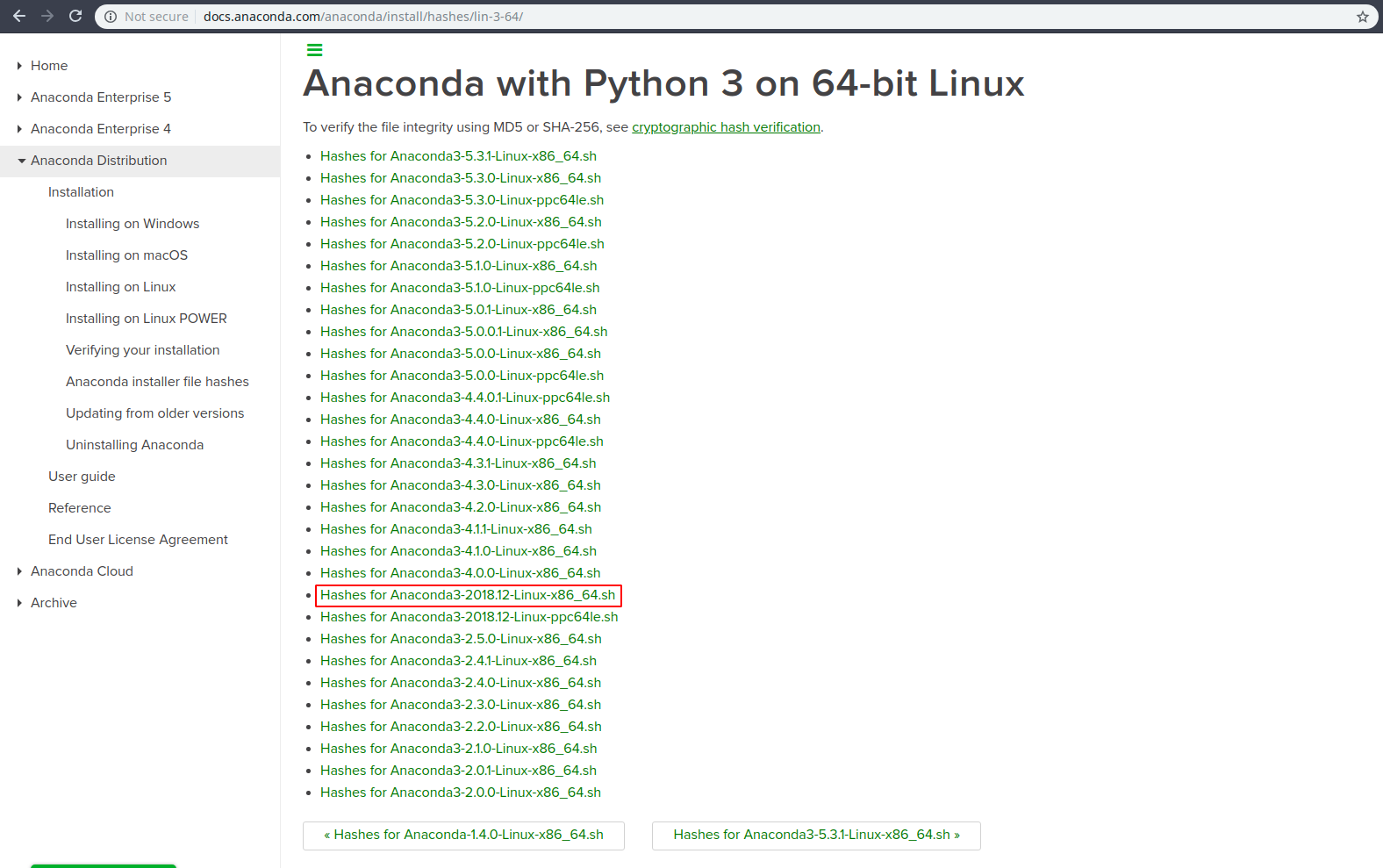

- SEE WHICH PYTHON VERSIONS ARE INSTALLED ANACONDA INSTALL
- SEE WHICH PYTHON VERSIONS ARE INSTALLED ANACONDA UPDATE
- SEE WHICH PYTHON VERSIONS ARE INSTALLED ANACONDA FULL
- SEE WHICH PYTHON VERSIONS ARE INSTALLED ANACONDA WINDOWS
Depending on your system and compute requirements, your experience with PyTorch on Windows may vary in terms of processing time. PyTorch can be installed and used on various Windows distributions. Here we will construct a randomly initialized tensor. To ensure that PyTorch was installed correctly, we can verify the installation by running sample PyTorch code. Then, run the command that is presented to you.
SEE WHICH PYTHON VERSIONS ARE INSTALLED ANACONDA INSTALL
To install PyTorch via pip, and do have a ROCm-capable system, in the above selector, choose OS: Linux, Package: Pip, Language: Python and the ROCm version supported. Often, the latest CUDA version is better. To install PyTorch via pip, and do have a CUDA-capable system, in the above selector, choose OS: Linux, Package: Pip, Language: Python and the CUDA version suited to your machine. GPU support), in the above selector, choose OS: Linux, Package: Pip, Language: Python and Compute Platform: CPU. To install PyTorch via pip, and do not have a CUDA-capable or ROCm-capable system or do not require CUDA/ROCm (i.e. PyTorch via Anaconda is not supported on ROCm currently. To install PyTorch via Anaconda, and you do have a CUDA-capable system, in the above selector, choose OS: Linux, Package: Conda and the CUDA version suited to your machine. GPU support), in the above selector, choose OS: Linux, Package: Conda, Language: Python and Compute Platform: CPU. To install PyTorch via Anaconda, and do not have a CUDA-capable or ROCm-capable system or do not require CUDA/ROCm (i.e. Tip: If you want to use just the command pip, instead of pip3, you can symlink pip to the pip3 binary. If you decide to use APT, you can run the following command to install it: However, if you want to install another version, there are multiple ways: If you want to use just the command python, instead of python3, you can symlink python to the python3 binary. Tip: By default, you will have to use the command python3 to run Python. Python 3.8 or greater is generally installed by default on any of our supported Linux distributions, which meets our recommendation. The specific examples shown were run on an Ubuntu 18.04 machine. An example difference is that your distribution may support yum instead of apt. The install instructions here will generally apply to all supported Linux distributions. PyTorch is supported on Linux distributions that use glibc >= v2.17, which include the following: Prerequisites Supported Linux Distributions
SEE WHICH PYTHON VERSIONS ARE INSTALLED ANACONDA FULL
It is recommended, but not required, that your Linux system has an NVIDIA or AMD GPU in order to harness the full power of PyTorch’s CUDA support or ROCm support. Depending on your system and compute requirements, your experience with PyTorch on Linux may vary in terms of processing time. Wait for the updates to terminate to obtain the latest Anaconda distribution.PyTorch can be installed and used on various Linux distributions.
SEE WHICH PYTHON VERSIONS ARE INSTALLED ANACONDA UPDATE
Second, update the meta-package: conda update anaconda Updating Anacondaĭo you want to update the Anaconda distribution?įirst, update the package manager: conda update conda For example, conda info -help will print the help page to the conda info command. Help: In case you need help about any particular command, append the -help flag to that command. This prevents from other results coming up that only have the name "anaconda" in them.

Note that the $ symbol at the end of the conda list anaconda$ command is a regular expression that ensures that the searched package ends with "anaconda". Get environment details of conda installation Get all package versions in conda environment

Here’s a table for your reference: CommandĬheck Python version in conda environment To check environment details of your conda installation, run conda info.To check the versions of all packages installed in your conda environment, run conda list.To check the Python version in a conda environment, run conda list python -f.To check the Anaconda version, run conda list anaconda$.To check your conda version, run conda -V or conda -version.To check your Python version in Anaconda, run python -V or python -version.Then run either of the following commands, depending on what you want to do. On Linux and macOS, just open the terminal or shell. Open Terminal: On Windows, start Anaconda by searching for "Anaconda Prompt" and click the first result.


 0 kommentar(er)
0 kommentar(er)
